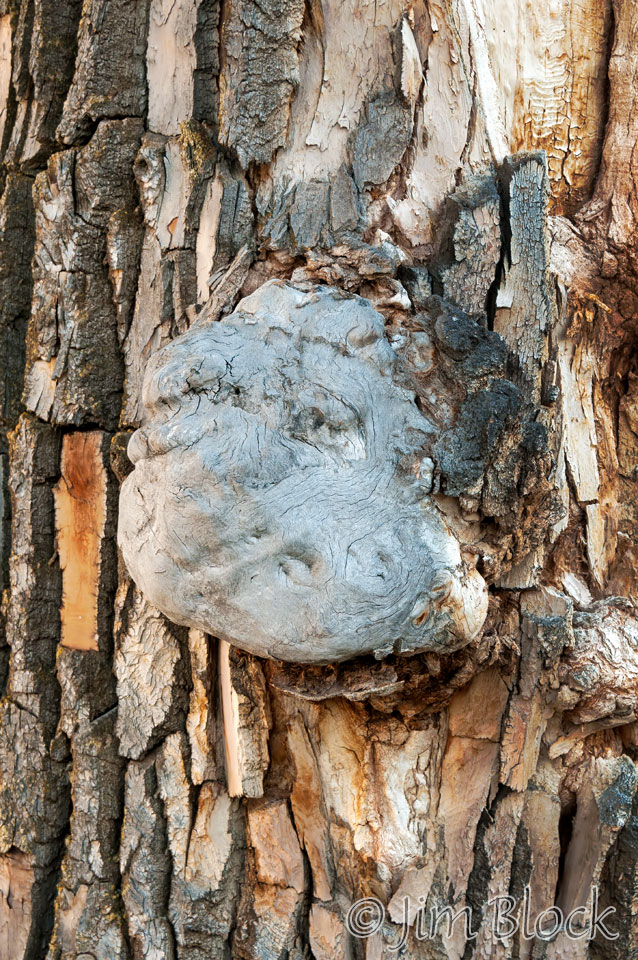
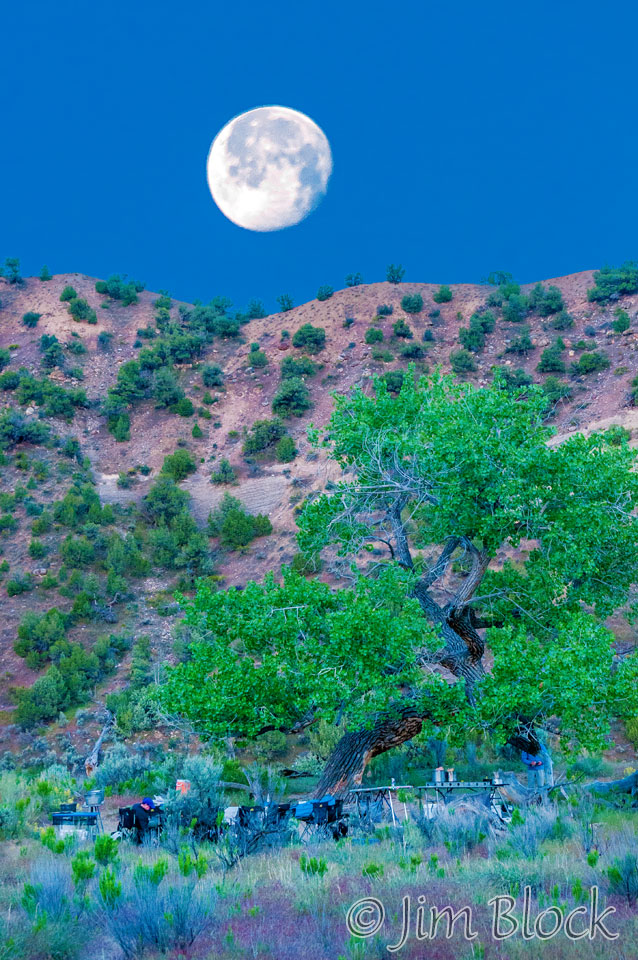
The photography day started at 6 am right at my campsite on Big Island — an almost full moon setting over our kitchen/dining area and an almost face in a tree.
Sausages for breakfast. Not for all, but I loved them. And the fruit was very welcome also.
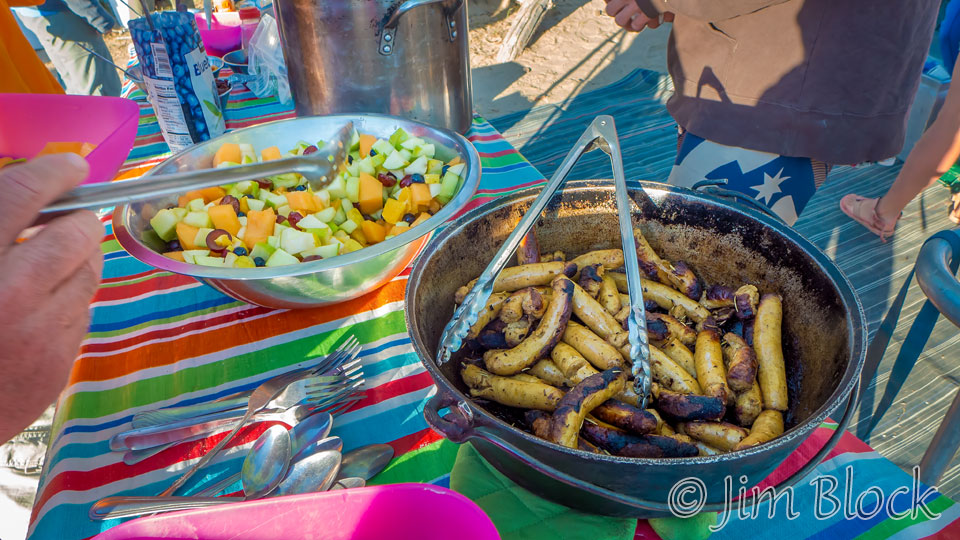
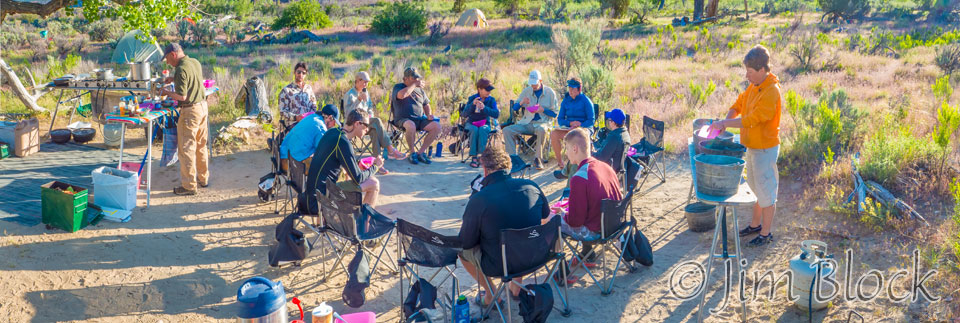
I just loved using that great bent cottonwood tree in the photos.
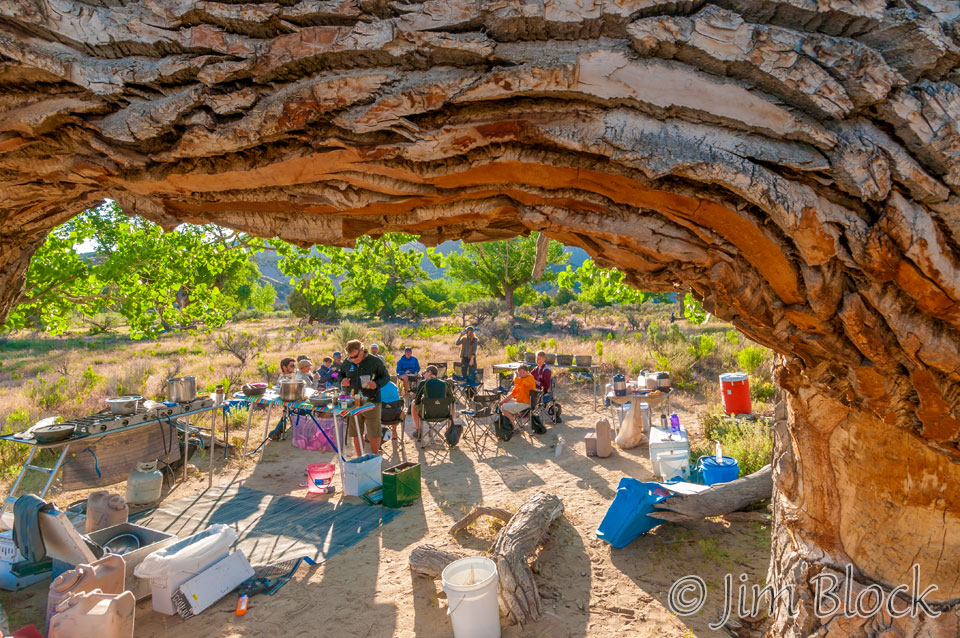
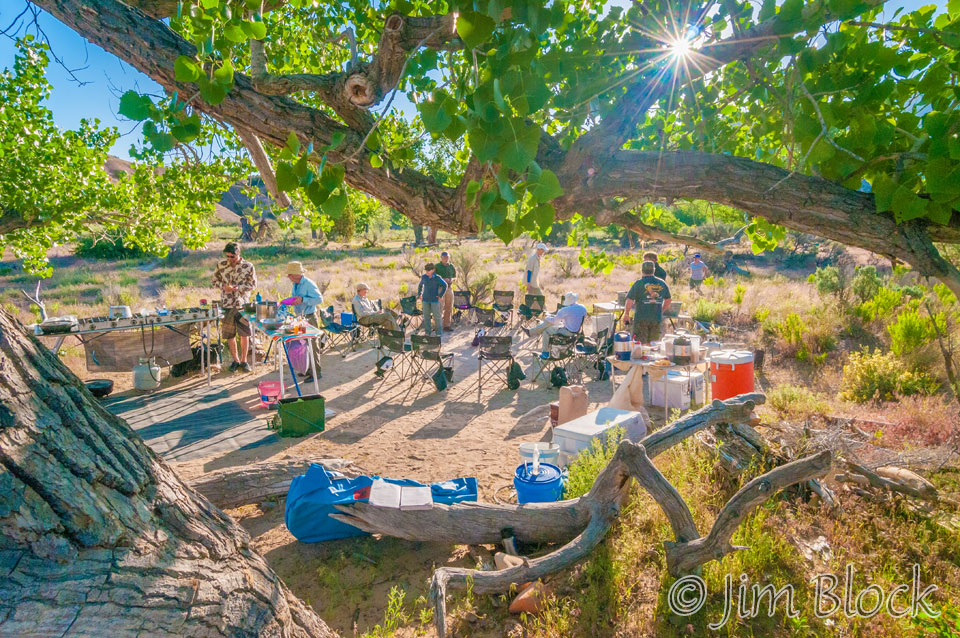
We practiced “dilution is the solution to pollution” on the trip. All liquids went in the river and all solids were carried out.
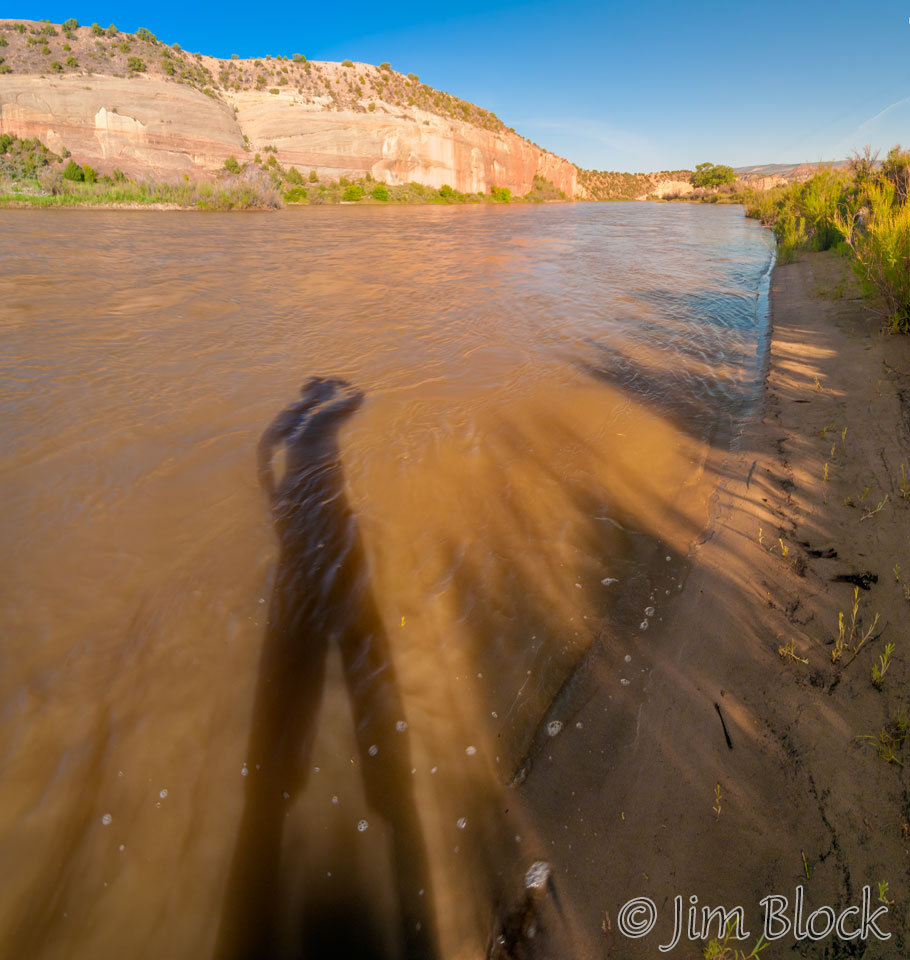
By 8 am most had packed up and moved to the beach. I took a last photo of where I had slept and then Charlie’s hat on a post on the beach.
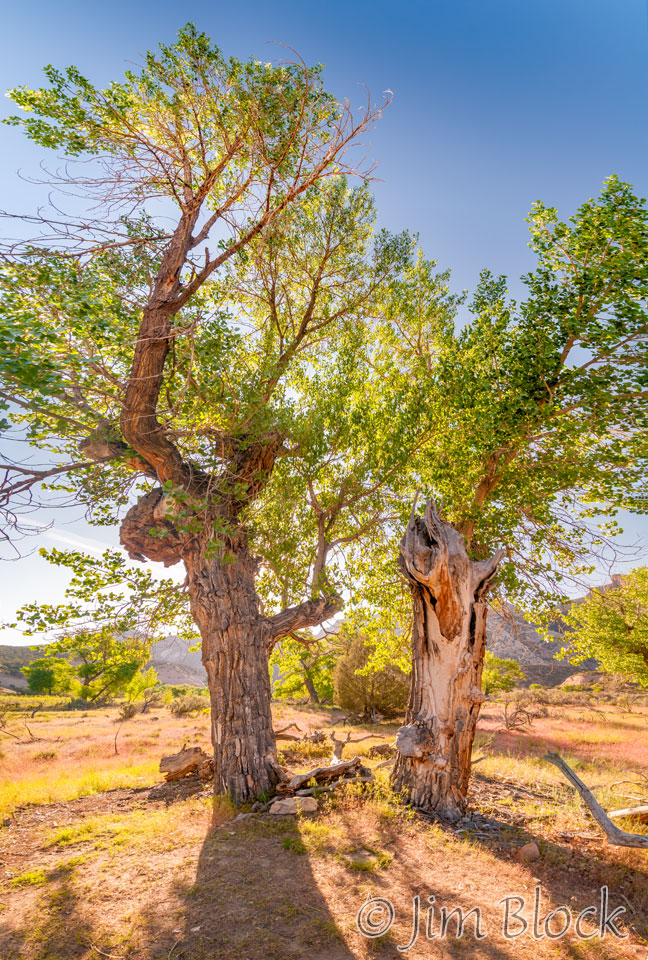
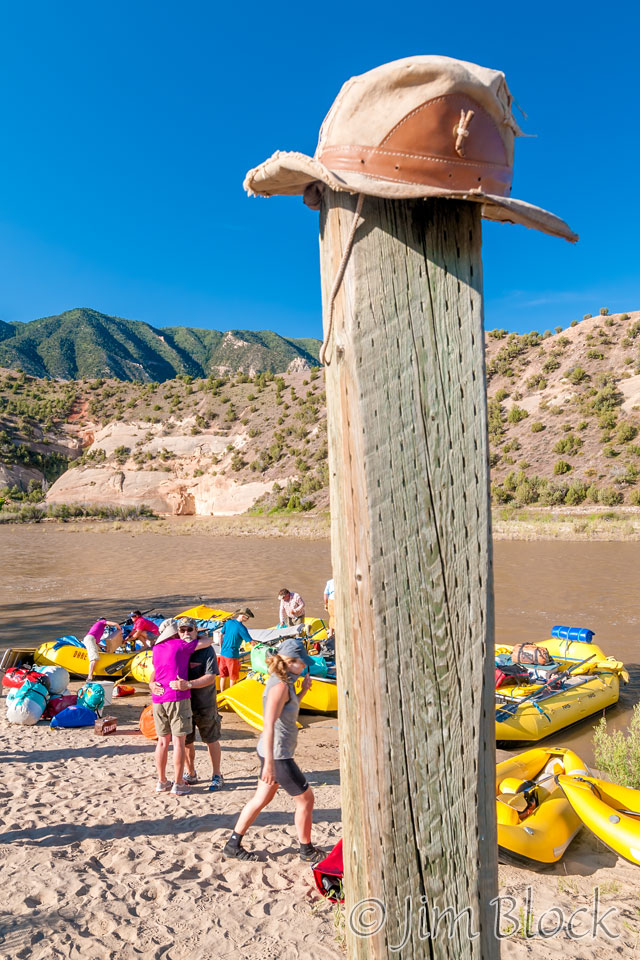
Stephen was using his iPhone again. If you look carefully at the center of this photo you will see Jill again helping, in this case loading an amo box with Stefanie.
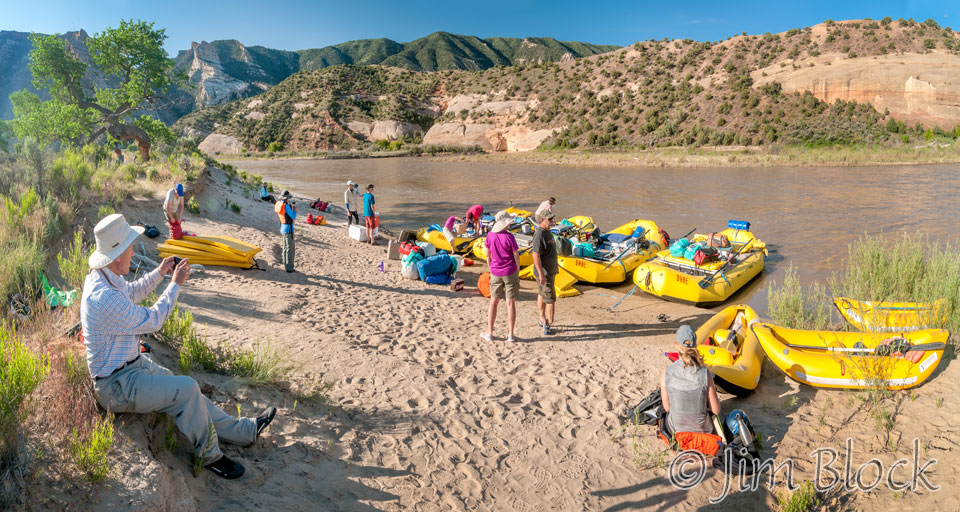
Inspired by Stephen, I tried one of my very few iPhone photo creations.
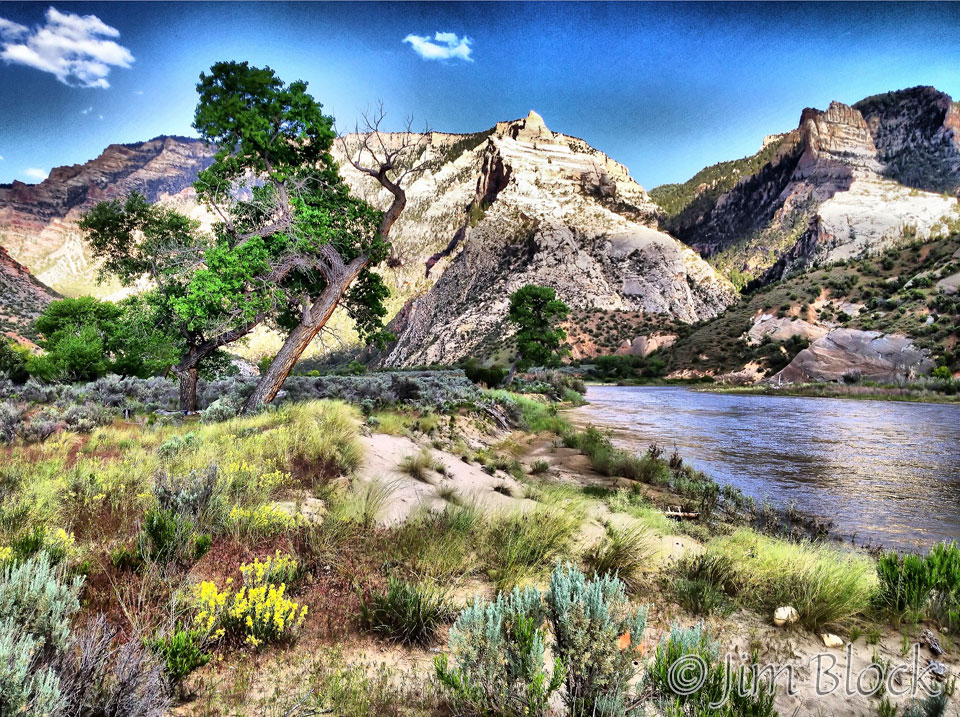
Meanwhile down the beach Melissa and Bruce were having a quiet moment together.
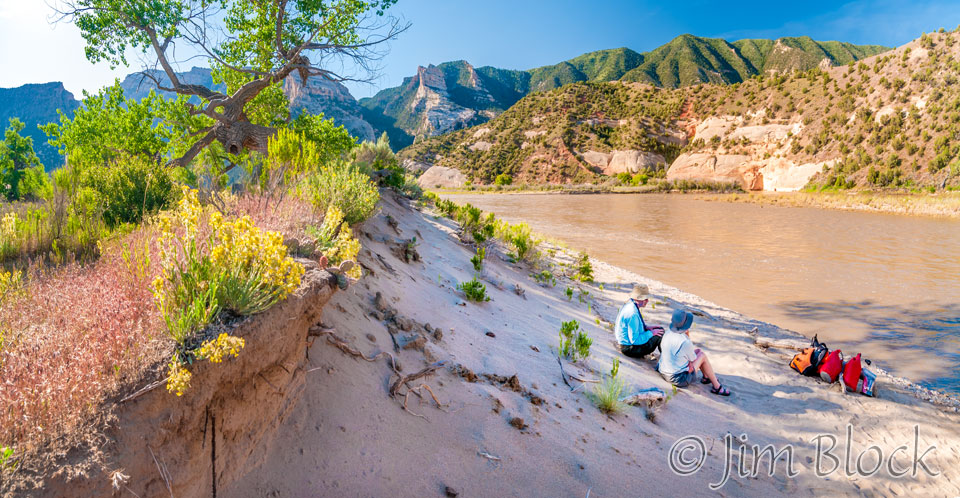
Waiting to shove off is a good time to let your breakfast digest and prepare for the splashes ahead.
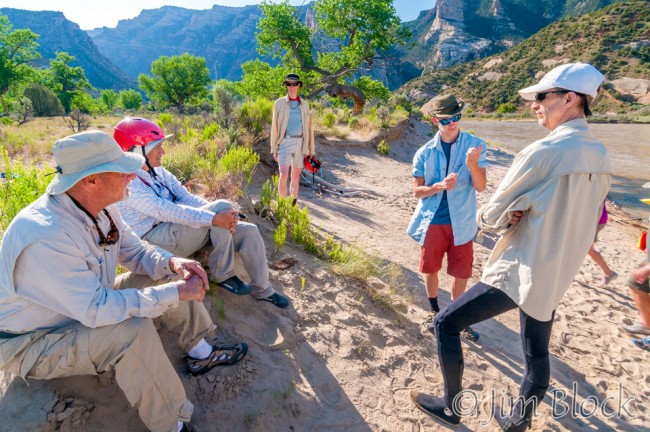
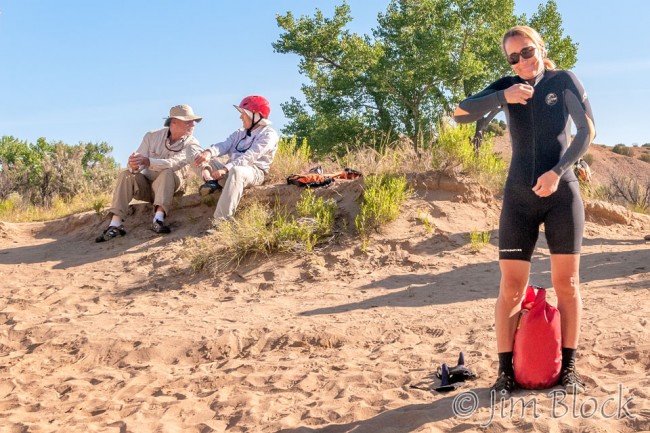
We shoved off and saw some violet-green swallows building nests and then some more-complete nests with birds’ heads peeking out.
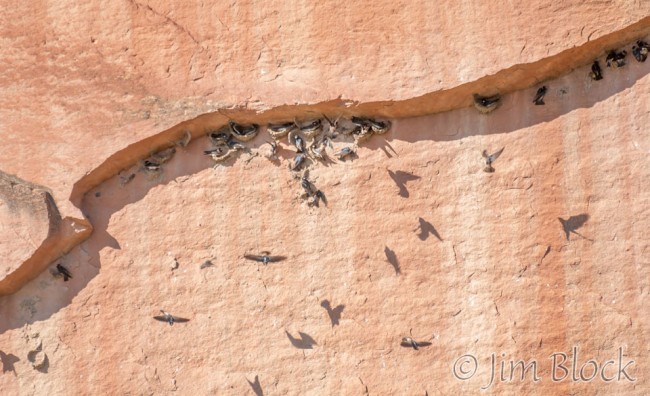
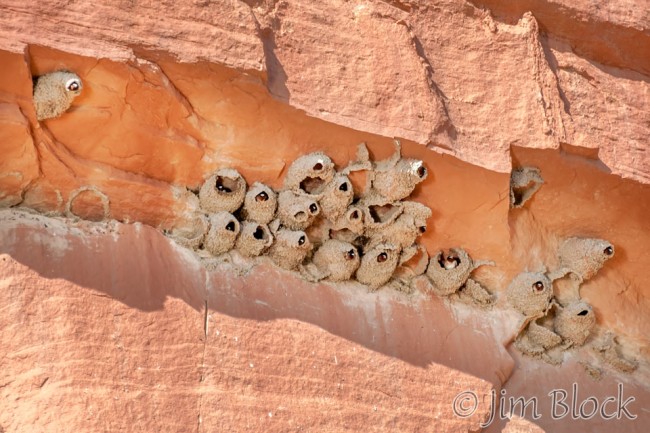
We flushed a pair of mallards and a common merganser. Mallards just explode up while mergansers run on water for quite a while like loons in order to get airborne.
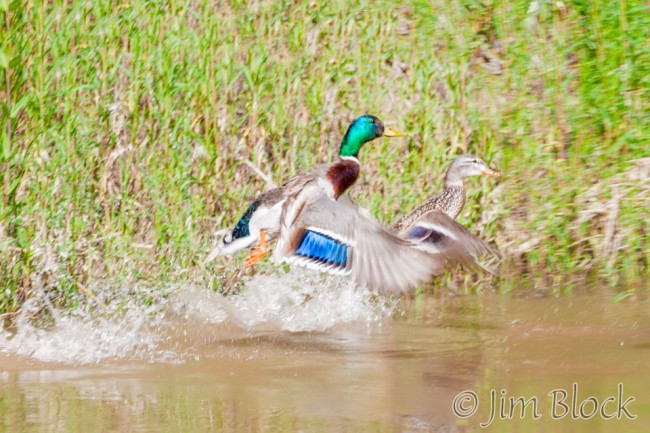
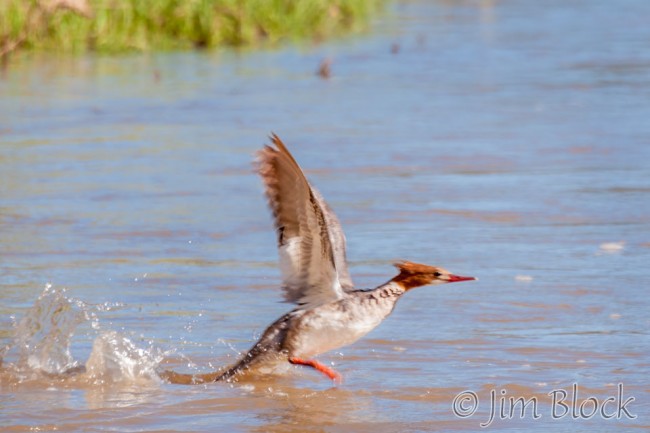
Bruce pointed out a neat petroglyph on the canyon wall as we drifted by, now in the slow waters of Island Park.
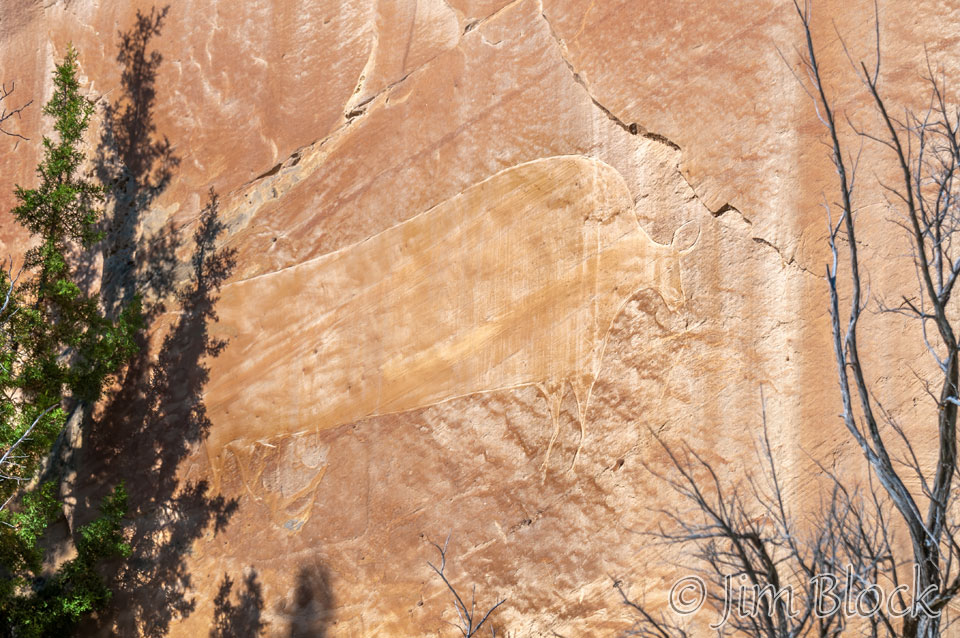
We saw lots of tamarisk, unfortunately. Tamarisk, commonly known as salt cedar, is a non-native shrub that grows in dense stands along rivers and streams. Introduced to the U.S. in the 19th century as an erosion control agent, it spread through the west and caused major changes to natural environments. These prolific shrubs displace native vegetation and animals, alter soil salinity, and increase fire frequency. A beetle that feeds on tamarisk was released over a decade ago by the U.S. Department of Agriculture in an attempt to manage tamarisk. Since then, the beetles quickly expanded their range. However, their impact has not been uniformly beneficial, particularly to birds that nest in the tamarisk.
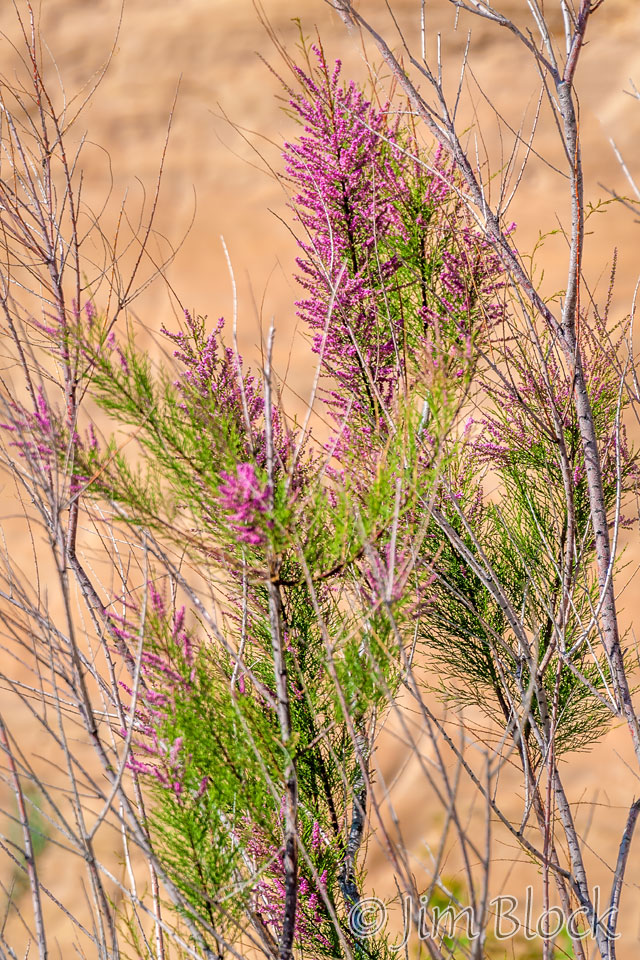
We passed a bird that I hope someone can help me ID — I’m not good on western birds.
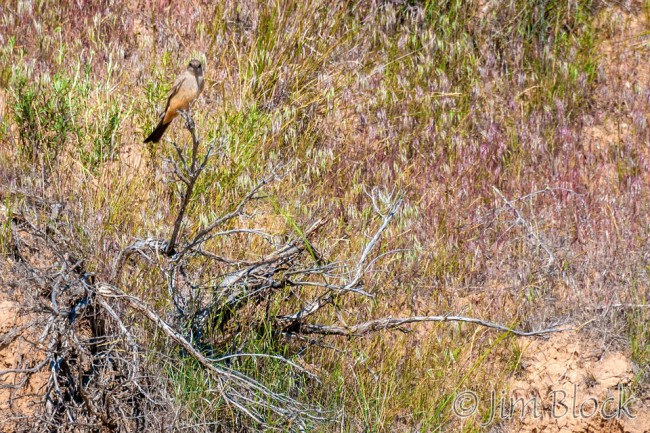
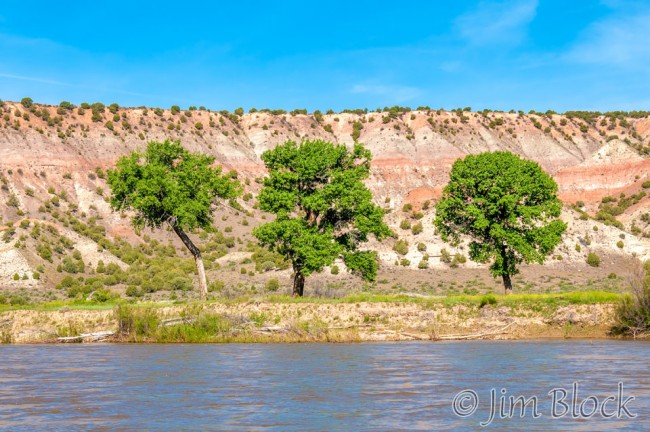
Then there was a group with dories. They reminded me fondly of the Grand Canyon trip earlier with O.A.R.S.
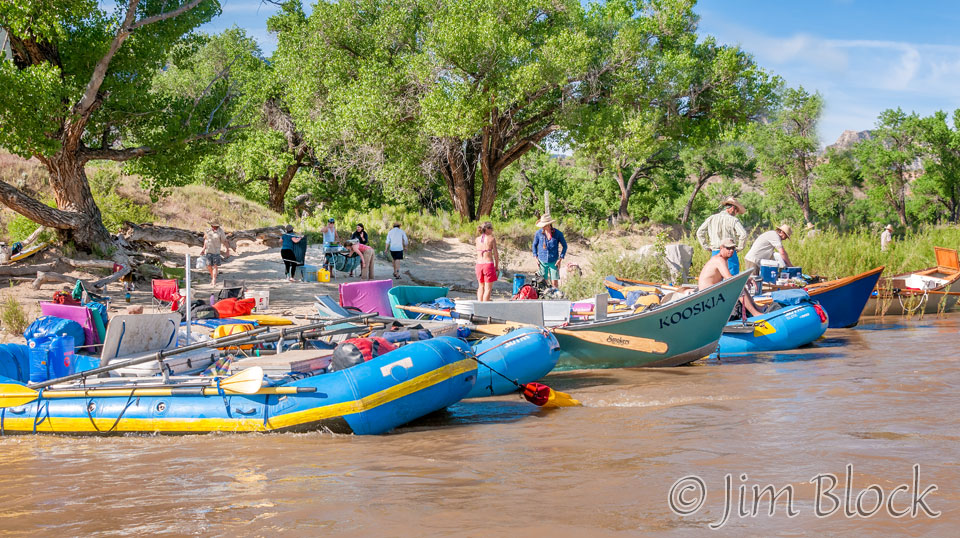
Gliding slowly through calm water, Ken and Jim paused for a photo as we approached Split Mountain.
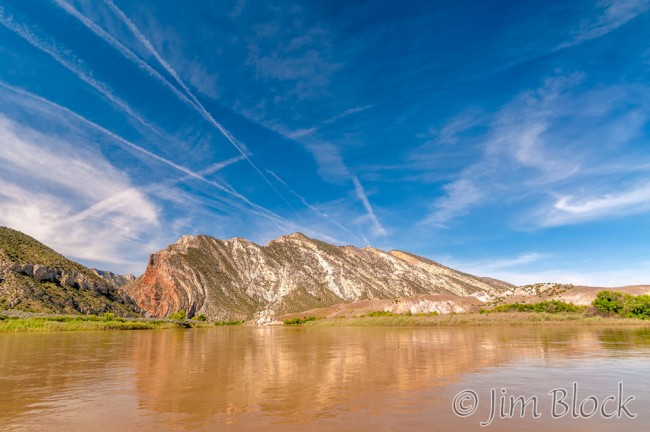
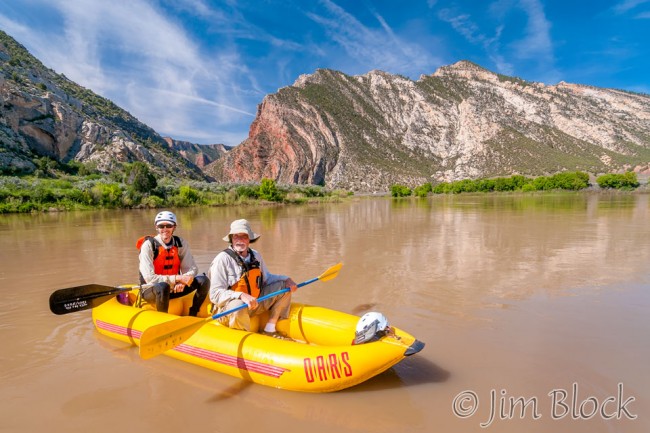
When I took these photos and saw all the contrails in the sky, I considered editing them out when I got home. But then I processed the 4-shot panorama below where the streaks in the sky nicely mirrored the layers of split mountain. Sometimes nature, with a little help from man, give a gift.
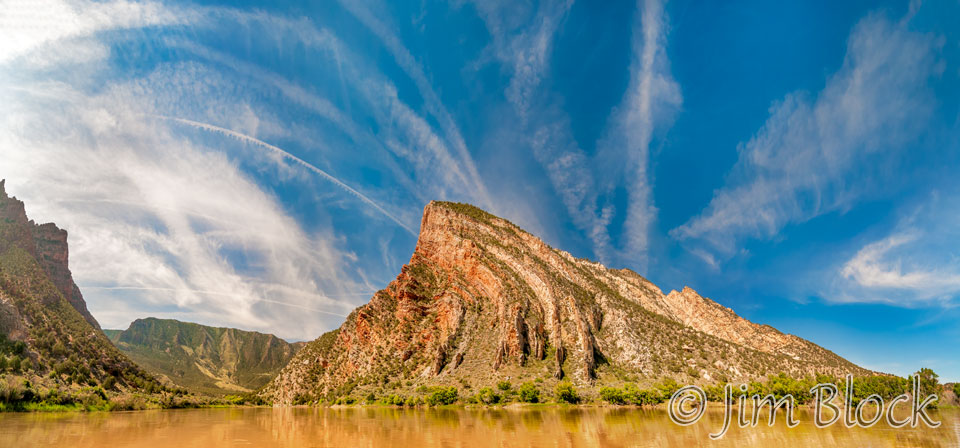
Here is another panorama with Ken and Jim as we approached Split Mountain — this one composed of 6 photos.
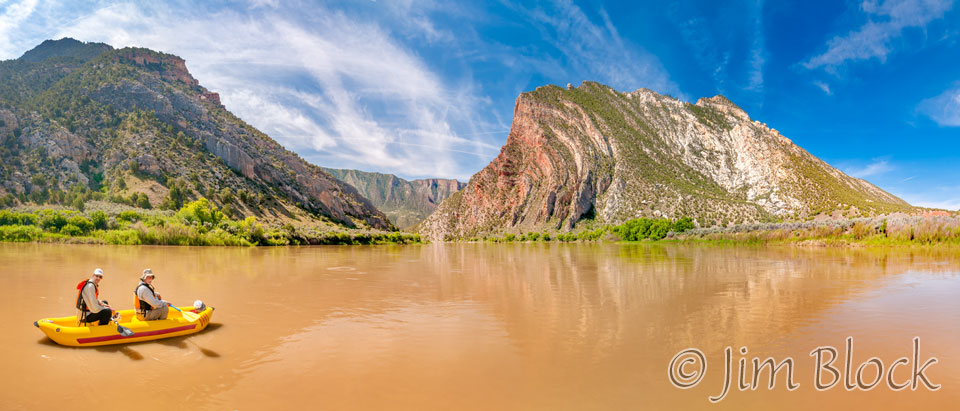
Here is what Split Mountain looks like from the other side — in Split Mountain Canyon.
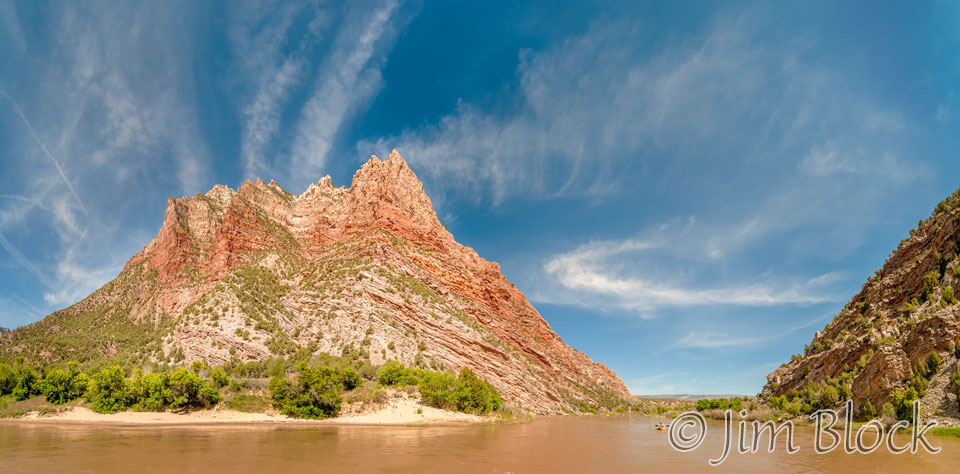
Now the exciting water begins. Here we are entering Moonshine Rapids.
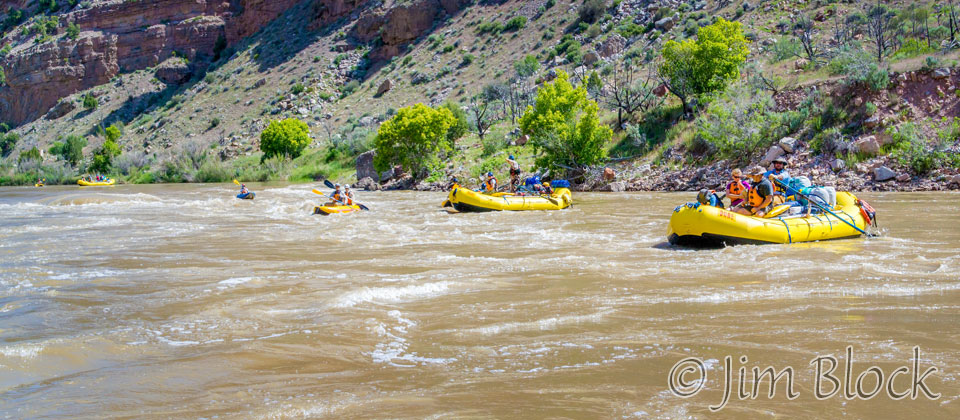
I got splashed good in Moonshine.
Three duckies flipped in Moonshine, leaving their occupants to do some “unintentional swimming”. Heather was one, although she hit the wave correctly teed-up (perpendicular, for those not math-challenged). Her problem was not enough weight. The wave flipped her 180 degrees backwards. She wound up under her duckie and swam for a while, drinking the river as she went, before being rescued.
Next up was SOB Rapids.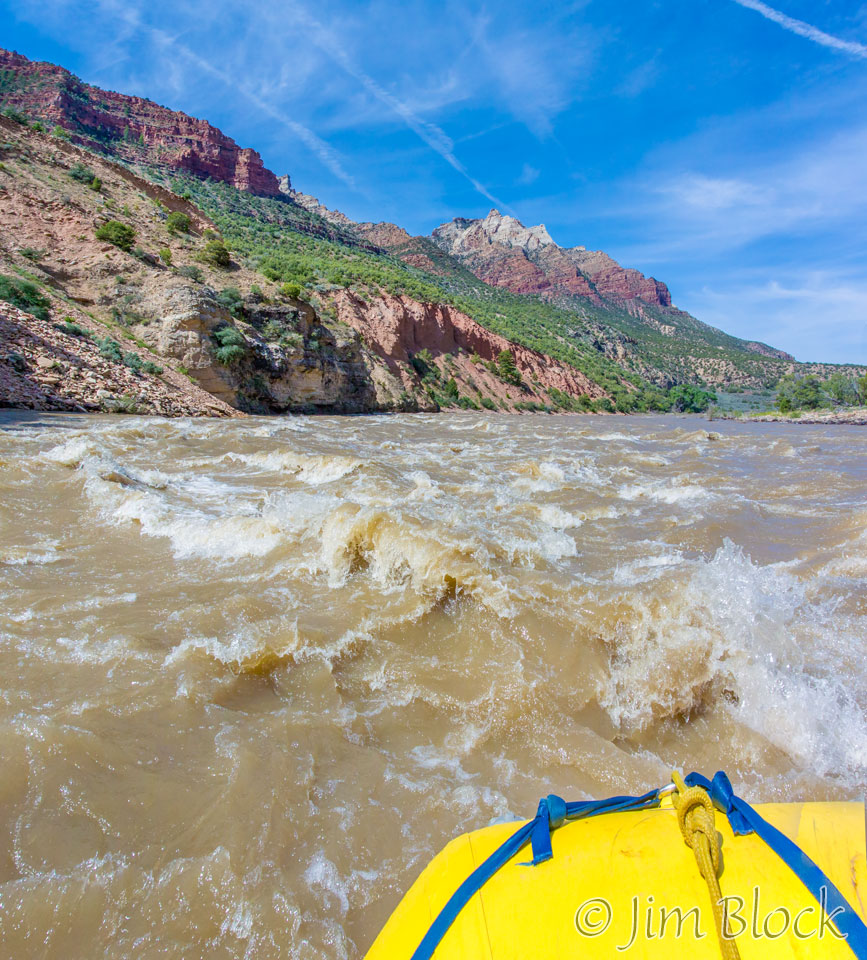
Stephen survived Moonshine. Here he is running SOB.
Here is Stephen still struggling to get through SOB.
Finally, we have yet again Stephen running SOB. I put these in because he dumped in Schoolboy and I don’t have any photos of his flip.
Here is part of our group exiting SOB Rapids. (If I have any of these spots mislabeled I hope some river rat/expert will email me so I can correct it.) Note there are two duckies on the back of Charlie’s raft. They were occupied by Heather and Dan heading into Moonshine.
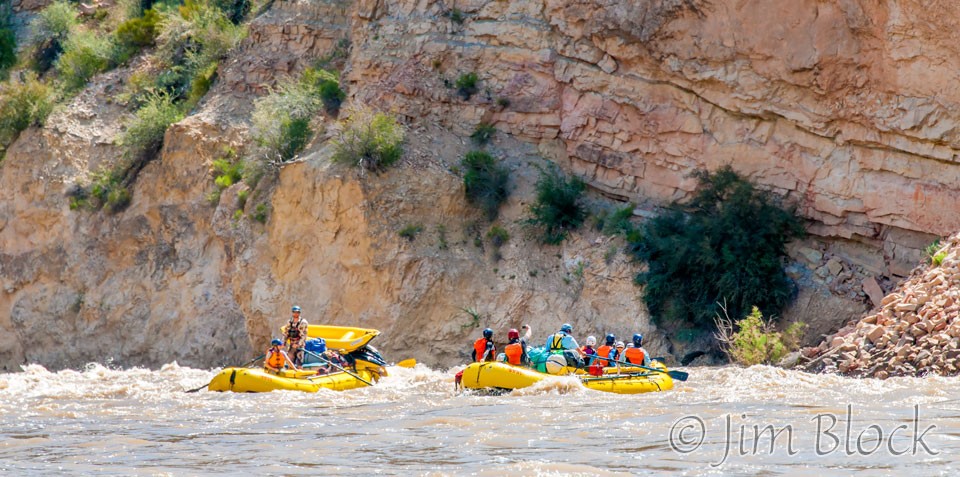
Stephen took a slightly wrong line through Schoolboy and battled some big waves coming off a WALL — and lost. We eddied out downstream of some rocks below Schoolboy, and when Stephen came drifting/swimming by I grabbed his life jacket, as Charlie had instructed at the Gates of Lodore, and pulled him into my raft. He lay panting at my feet for 5 or more minutes and then decided to “get back on the horse” that threw him and paddle on. Here he is ready to head downstream again. Somehow both his pants legs grew about a foot longer in this adventure — we don’t understand why.
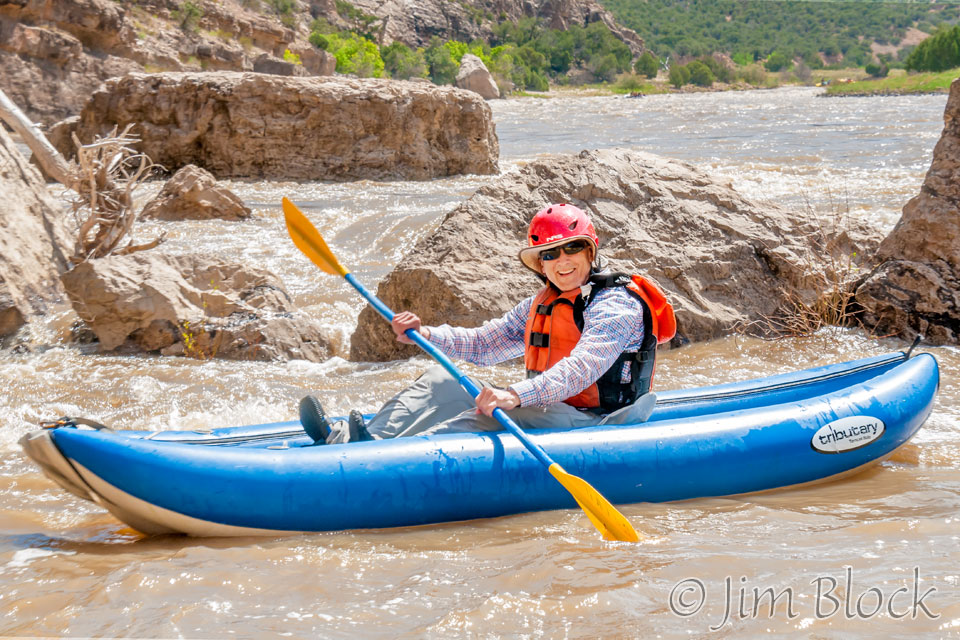
We had eddied out below Schoolboy to collect Stephen and wait for the other rafts that were detained picking up some of us who swam in Moonshine. Several had gotten back on their duckies like Stephen.
Here we are sitting quietly in the eddy. It would only be a short paddle to a sunny piece of sand where we could dry out and have lunch.
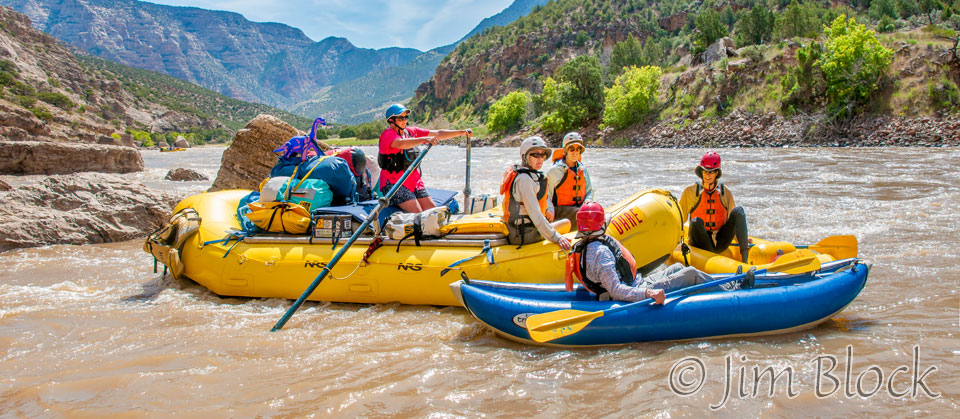

Soon we were back on solid land in the form of a warm, sandy beach. We had some time to discuss the adventures of the last half hour, sort our gear, dry out, and rest before lunch.
And what a lunch it was.
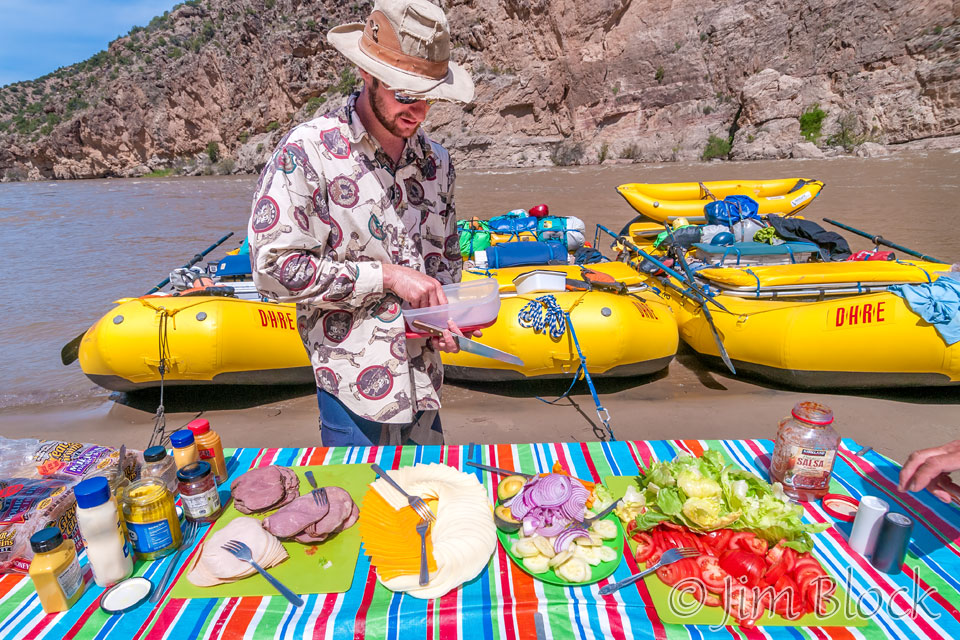
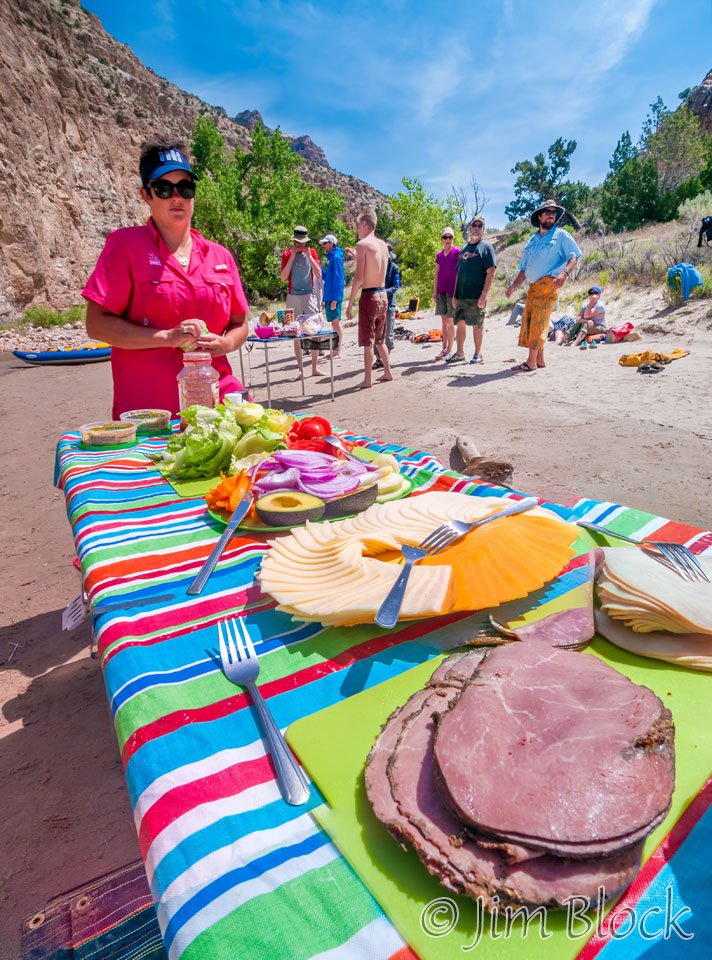
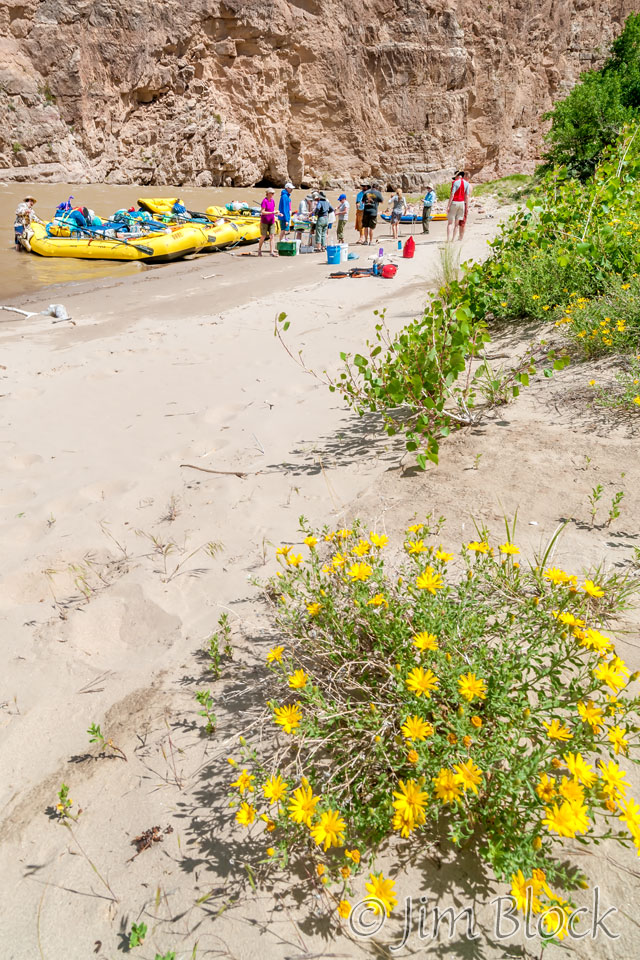
Stefanie made Jill a “Cheescake” after lunch. After I took the photo of Jill holding it, Stephanie made one for me too.
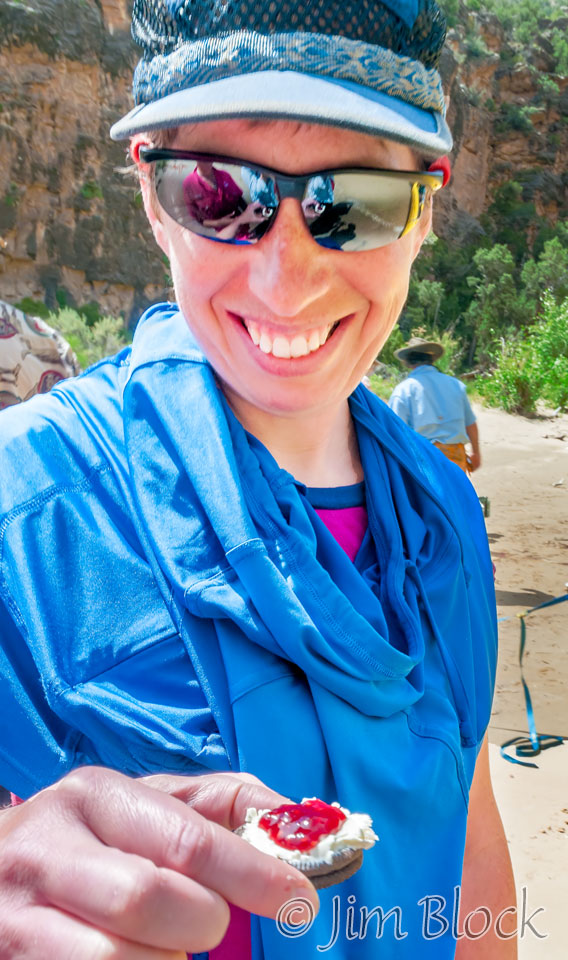
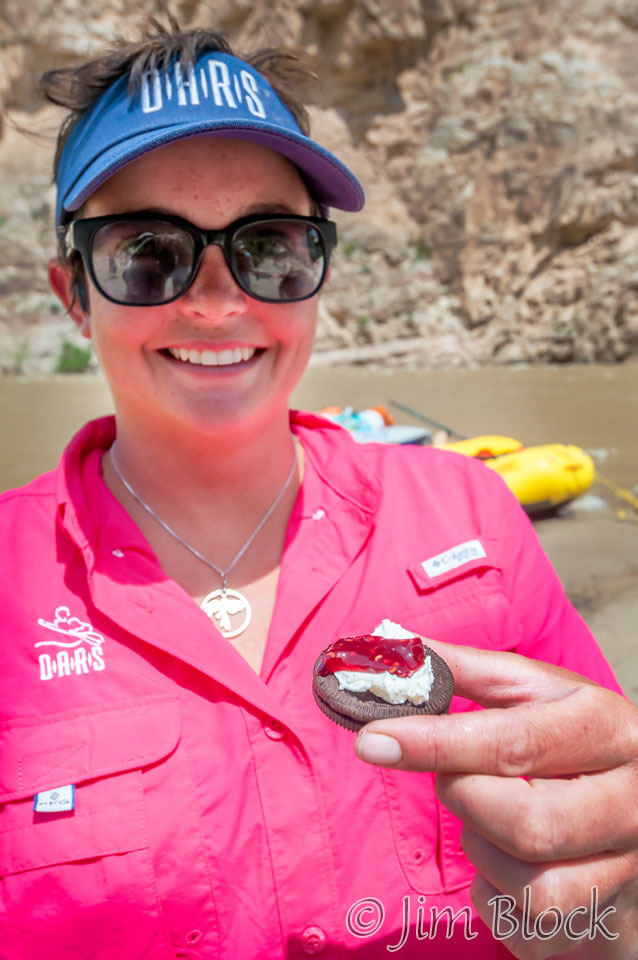
We had one more rapid to run — Inglesby. Here is what the walls looked like in this region.
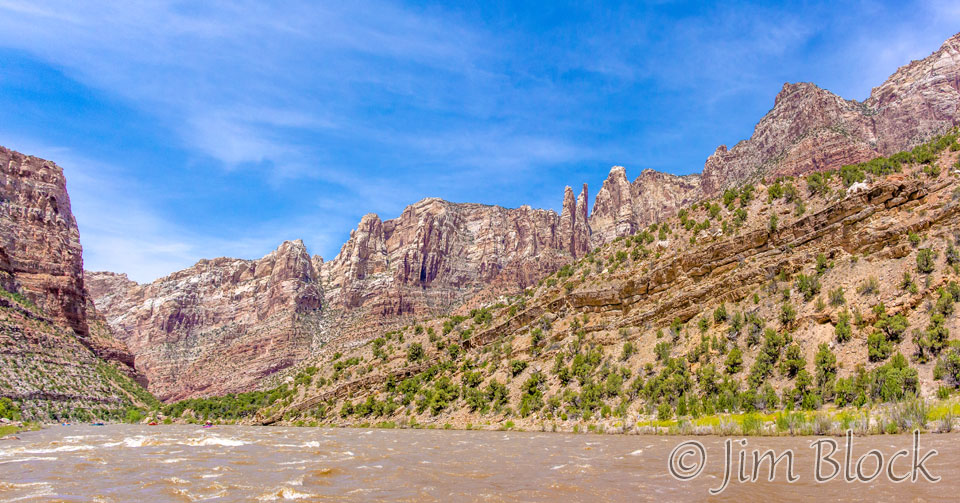
And here we are entering Inglesby.
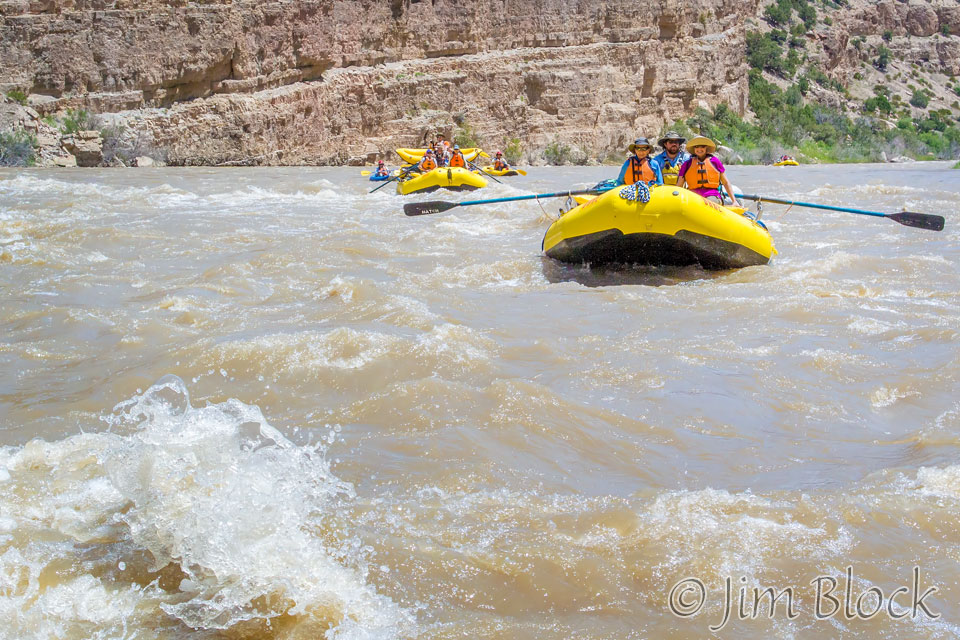
There were some nice waves and a huge hole. We stayed away from the hole, but I got some of the action from my raft.
Having traveled part of Moonshine with the black side of their duckies facing skyward, Heather and Dan decided to ride the rest of the way with, not in, their duckies. Six days later when we returned to again run the big rapids in Split Mountain Canyon, Heather and Stephen in a double duckie and yours truly in a single duckie kept the black sides down through the entire canyon.
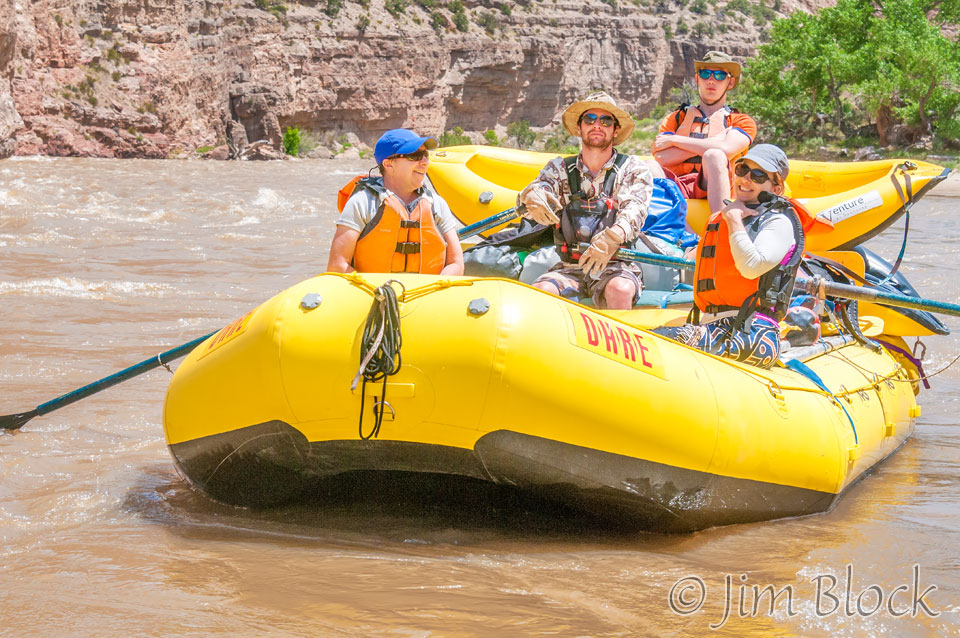
It was a great trip. Thank you Bruce, Charlie, Stefanie, and Andrew for guiding us through in style.
Here are some more photos from our last day.
Please visit the Dinosaur National Monument page to see photos from Harper’s Corner and the Dinosaur Quarry.




















































































